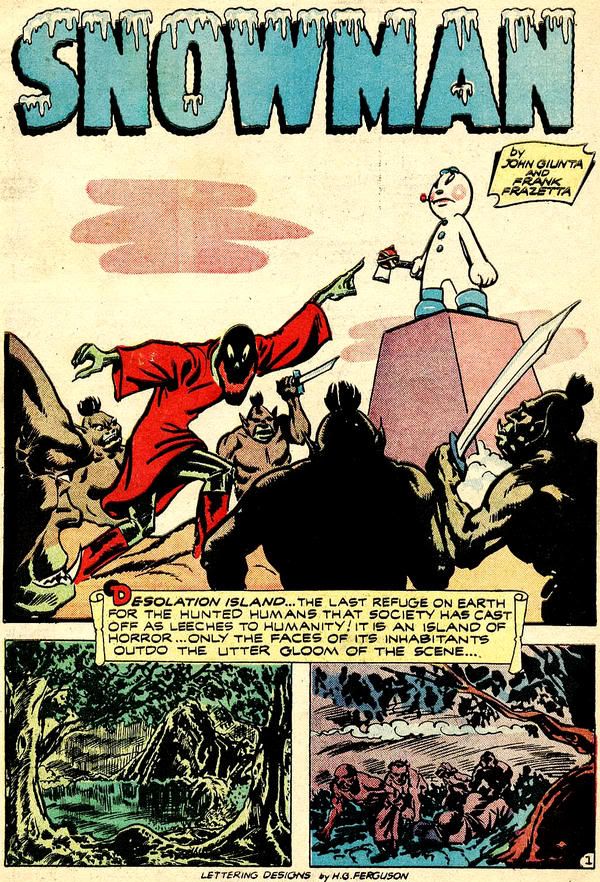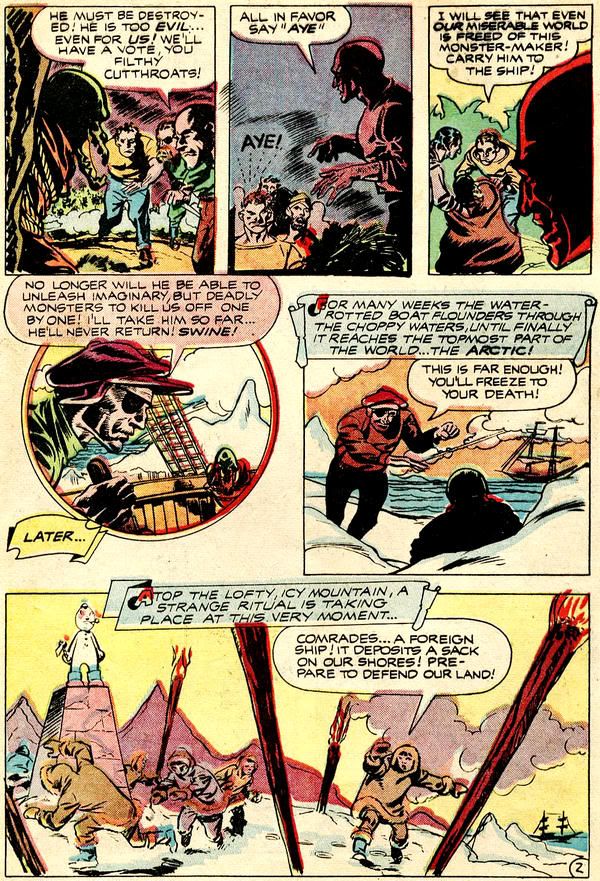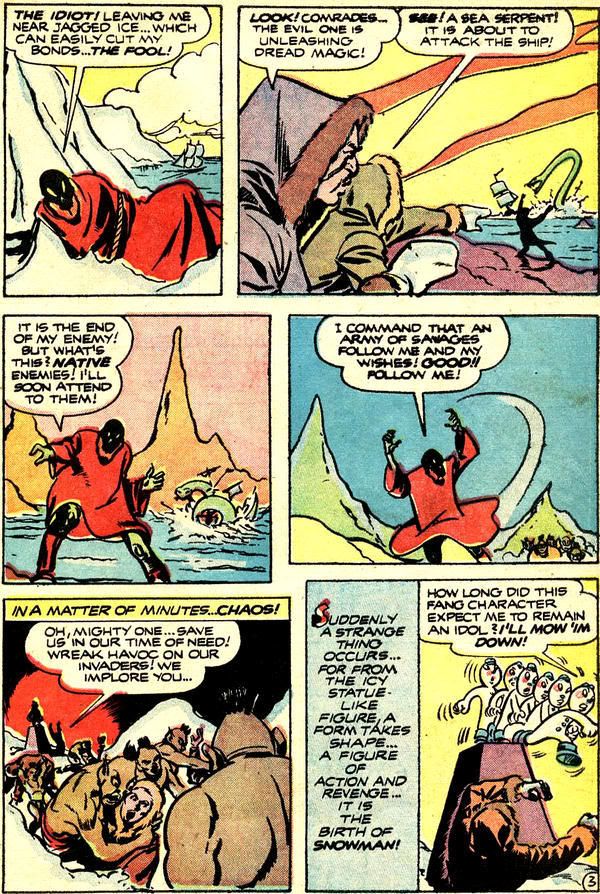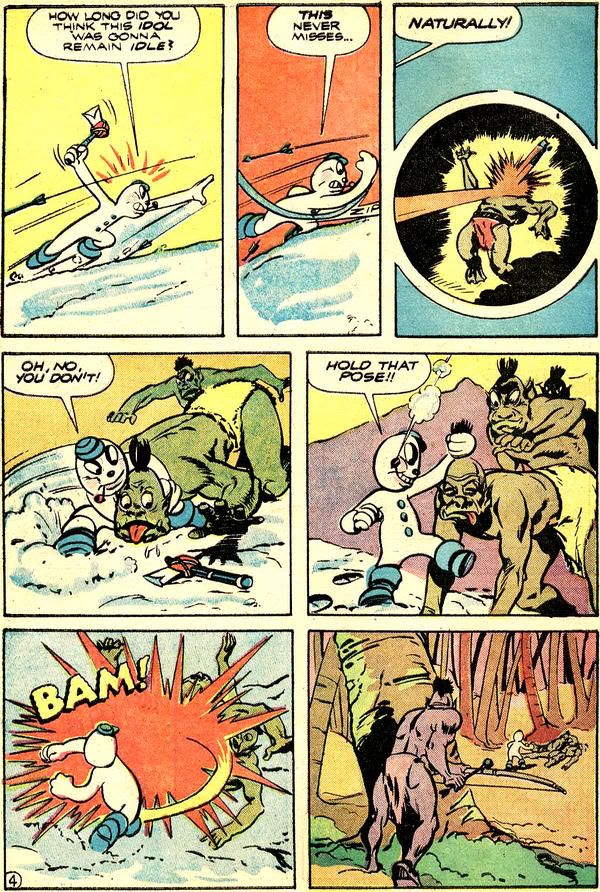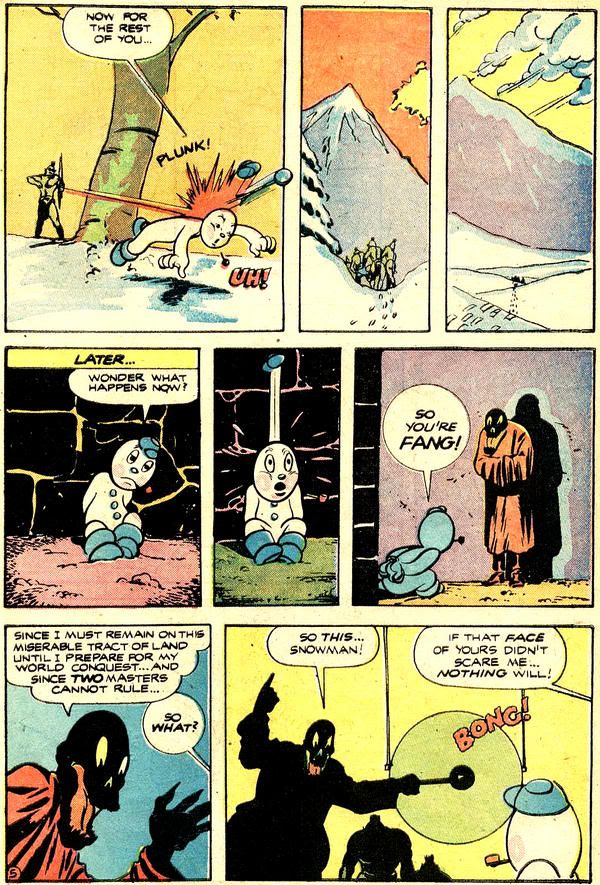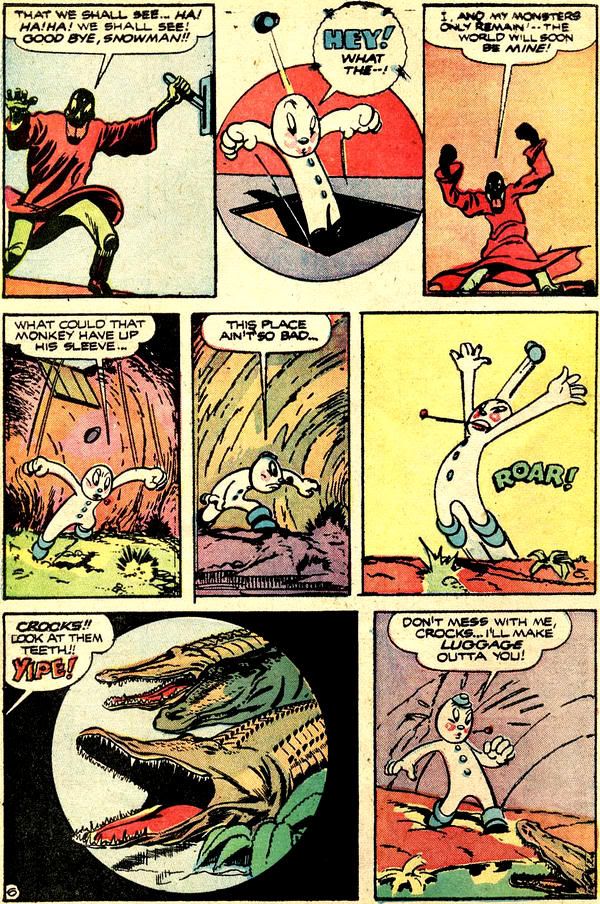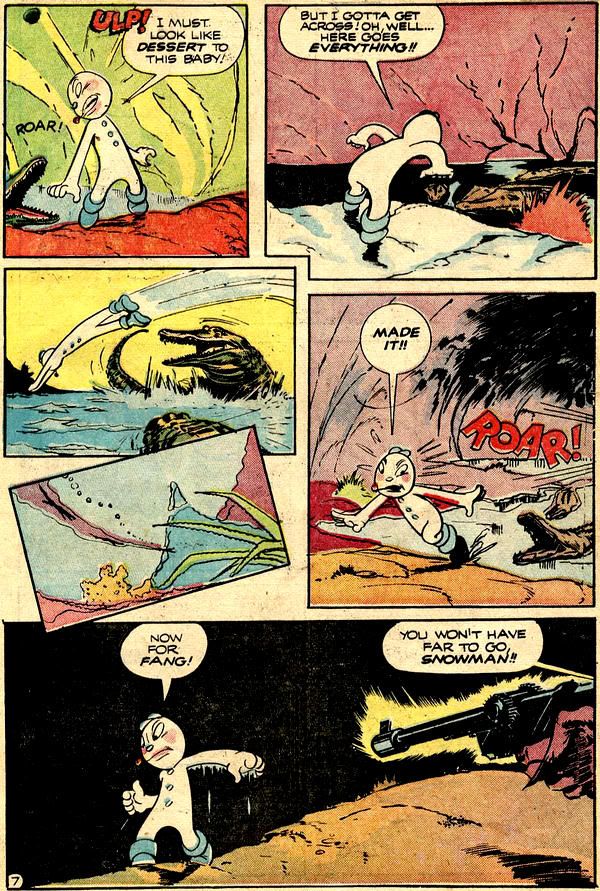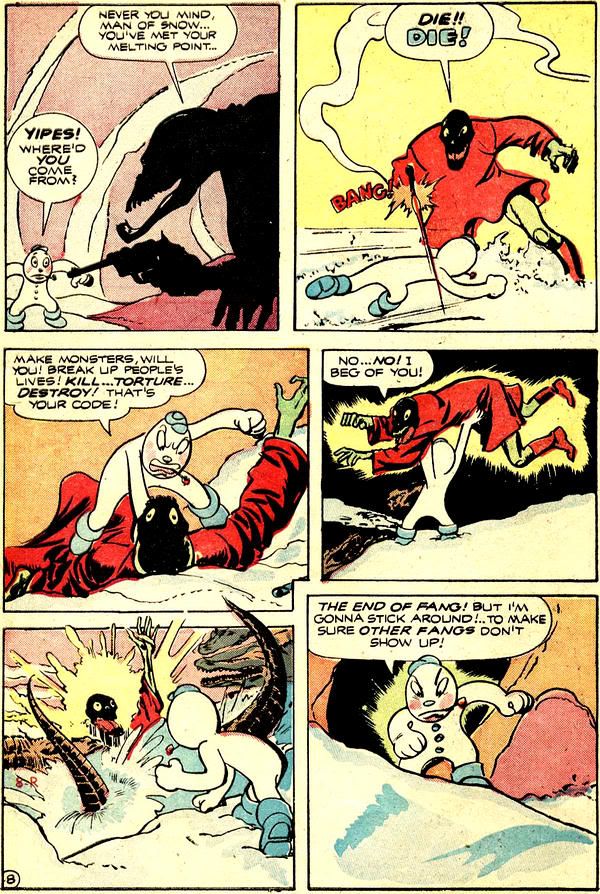 [This guest review comes from Adam J. Noble, a public librarian living in Eastern Canada. At Noble Stabbings!!, he is blogging his attempt to read all of the comic series Cerebus in 2009.]JLA: Ultramarine Corps
[This guest review comes from Adam J. Noble, a public librarian living in Eastern Canada. At Noble Stabbings!!, he is blogging his attempt to read all of the comic series Cerebus in 2009.]JLA: Ultramarine Corps is a book of extremes. (Hey, why isn't that a book? "
Extreme Justice?") This volume collects the initial three issues of the defunct Justice League of America anthology "JLA: Classified," which were written by legendary former
JLA scripter Grant Morrison, and illustrated by Ed McGuinness, who, among his many other virtues, has a name that contains the name of my favourite alcoholic beverage. This volume also collects
JLA: WildC.A.T.s about which I'll tell you straight-up, Slice: it sucks. I'm going to pretend
JLA: WildC.A.T.s doesn't exist for the next few hundred words.
The "Ultramarine Corps" JLA storyline, so-named by somebody at DC's trade-paperback department, doesn`t really have that much to do with the titular team of superheroes, who previously appeared in Grant Morrison's mid-90s JLA run as government-sponsored foils for the Justice League. A better title for the collection might have been the cover copy on the first issue: "Where is the Justice League?" or even "JLA: Seven Soldiers."
JLA: Ultramarine Corps is probably not a great book to throw at somebody who has never read a DC comic before. For starters, if you don't know who the Ultramarine Corps are
[Ed: and even if you do], you'll probably get whiplash reading the book`s first few pages, in which the Corps storm the floating city of Superbia to rid it of the invading telepathic ape Gorilla Grodd and his partner, Neh-buh-loh the Huntsman, formerly Nebula Man. "The JLA is AWOL," Corps member Warmaker One intones as the story begins. "Who needs the Justice League?" (Asking that question never works out well for anyone.) As awesome as it is to see The Knight (the British Batman wannabe) blow past monkey warriors on a motorcycle with the music of the Sex Pistols playing, once you notice the song that's playing is "Pretty Vacant" you can sort of see where Morrison is going with this. The Ultramarines are all style, no substance; all show, no go.
And because Grant Morrison`s at the helm, this book works on a few different but familiar levels. First off, the story (released in 2005) serves as a connecting bridge between some of the plot elements of Morrison`s 1990s
JLA work and his subsequent efforts for DC. Neh-buh-loh and the parasitic Sheeda-men are here from
Seven Soldiers of Victory, the infant universe of QWEWQ from
All-Star Superman plays a major role, and, of course, the Knight and his young female sidekick, The Squire, from Morrison's
Batman are present. When Batman receives a distress call from Squire and quips to his trusty butler "I'm opening up the sci-fi closet, Alfred. Don't tell my friends in the G.C.P.D. about this," Morrison has effectively laid out a concise manifesto for his coming
Batman run.
But as readers of
All-Star Superman know, any time the infant universe of QWEWQ gets mentioned, it's a red flag: Morrison has something profound to say about the actual real world and our need to create superheroes. To be sure, the story is about how the Ultramarine Corps are "pretty vacant" and cannot stack up heroically against the JLA. But that story's been told before -- in
Kingdom Come, in "What's So Funny About Truth, Justice and the American Way," in Warren Ellis'
StormWatch -- the vigilantism vs. heroism theme is nothing new to superhero comics. So what's going on here?
Morrison's telling us what each team of heroes means to
us. The Ultramarines are violent and militaristic, and after Superman and company save the day, Big Blue gives the Ultramarines an appropriate dressing down. The Justice League spends the first two-thirds of the book tracking down the super-serial-killer Black Death on Earth-Q (Batman laments: "They got lost saving somebody else's universe. Typical."). It's difficult to express here, but there is something about how all the scenes on QWEWQ are drawn in a 4-by-4 panel grid that is unbelievably claustrophobic, and when the League talk about our universe and its lack of superheroes being "unbelievable," "damaged," and "unhealthy" there is something so ineffably
sad about it. It is like someone in our world describing a universe without color or light or love. For myself, at least, it brings to mind the final pages of
Jimmy Corrigan -- Superman
feels for us. Hence his decision to assign the Ultramarines to patrol QWEWQ and become its heroes and redeemers. Regrettably, as any reader of
Seven Soldiers of Victory knows, the Ultramarines are doomed to fail.
As much as I enjoyed Morrison's recent apocalyptic meta-epic
Final Crisis, JLA: Ultramarine Corps gets to the heart of that work's themes in a more concise, more uplifting, more energetic, and more poignant way. Namely, if superheroes didn't exist [which they don't] we would have to invent them [which we have]. And the superheroes know it.
In case I've lingered too long on the emotional/spiritual elements of this story, let me assure anyone who is considering reading this: it is also ass-kickingly awesome. It has The Squire (on whom the entire Internet has a crush, from what I can tell) placing telephone calls to another dimension while on a JLA base on Pluto. It has telepathic man-eating gorillas fighting Justice League robot-clones. It has
Batman roasting on a spit. It has Batman in a flying saucer. All of which is drawn by Ed McGuinness, who we all loved on
Deadpool in 1997
[Ed: and Superman in the 2000s] and who even manages to make Jeph Loeb worth reading on a semi-regular basis. He's like Joe Madureira except with style
and talent
and a work ethic.
Oh, and much as I'd like to forget it,
JLA/WildC.A.T.s is in this collection, too. Appropriately, as filler. It's drawn by Val Semeiks (
DC One Million), whose work I'd describe as "bland" but I can't really work up the enthusiasm to get past "bla." If you've read any superhero crossover before,
JLAWildC.A.T.s is just like that one, only not fun or cool. The only thing remotely memorable is that Majestic tells Electric Blue Superman that he'd look good with a cape. Ugh.
[Ed: And yet written by Grant Morrison. Go figure.]Despite the presence of a weak crossover with the Un-X-Men,
JLA: Ultramarine Corps is one of those comics I allow myself to at least skim on a monthly basis. It's loud, it's fun, it's touching, and it has lots of Batman. It's everything I love about superhero comics. And at least in terms of succeeding at what it sets out to accomplish, it's every bit as successful as, say,
Watchmen. (Yeah, I don't play.)
[Coming next week, the long-awaited Collected Editions review of Final Crisis. Don't miss it!]

































